32 Different Types of Palm Trees: With Pictures & Info
-
Ed Malaker
- Last updated:
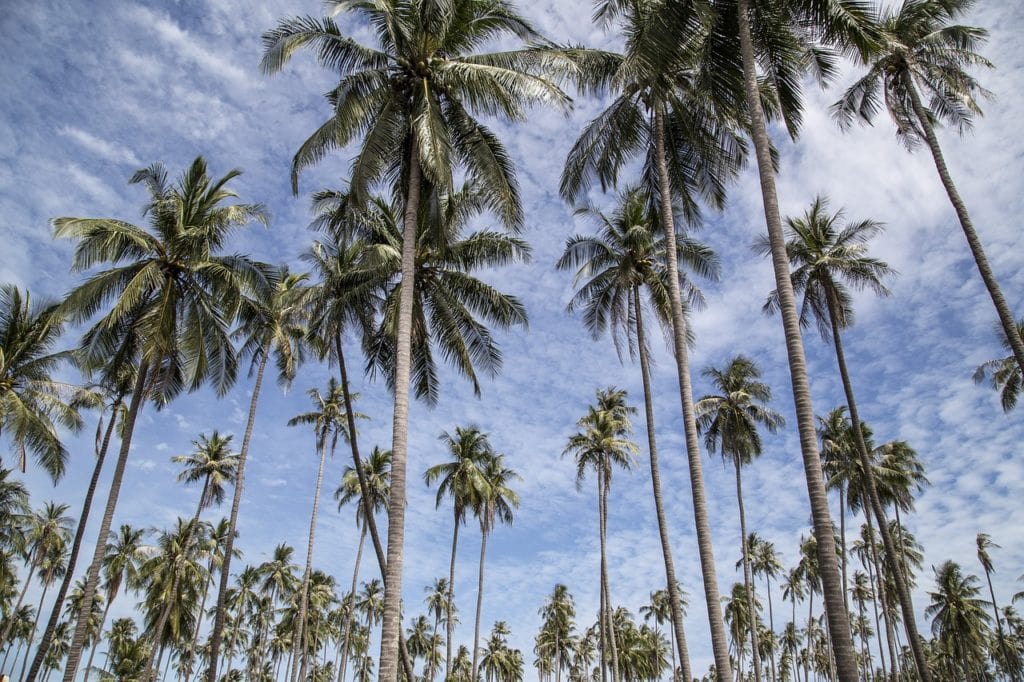
Palm trees are a fascinating type of tree that most of us think are strictly warm-weather plants. However, some species can live and weather down to 10° Fahrenheit. They come in a wide range of sizes, and the leaves vary in shape and color.
If you’re thinking about getting a palm tree for your home or yard and would like to know more about the varieties available, you’ve come to the right place. We’re about to list several species that would make a perfect choice. We’ll give you a short description and a picture for each, so you can decide which is right for your next landscaping project.
The 32 Different Types of Palm Trees
Fast-Growing Palm Trees
1. Carpentaria Palm
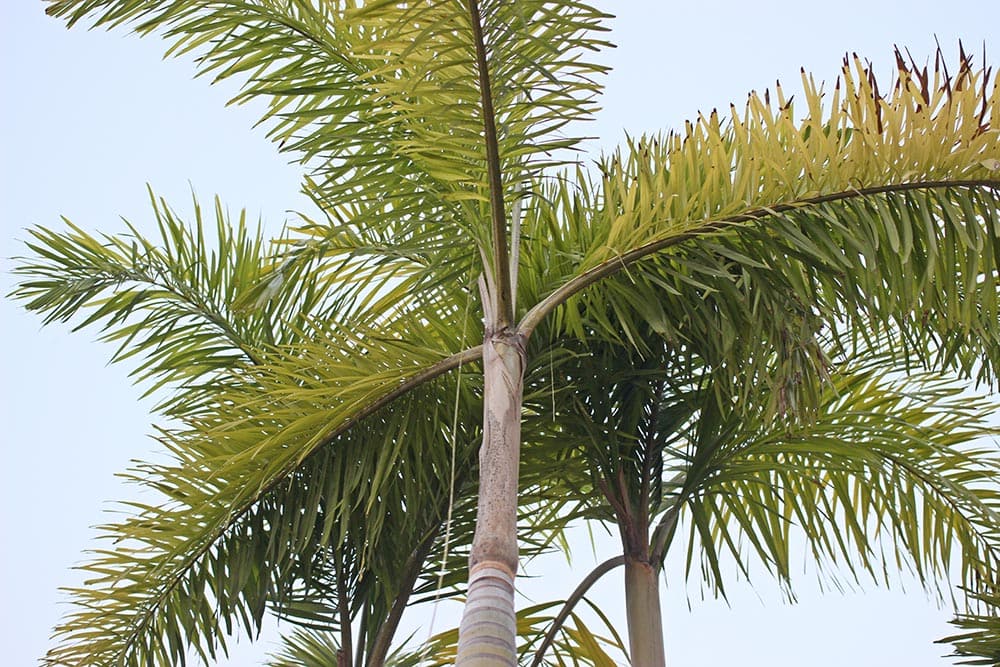
The Carpentaria palm is a medium-sized palm tree native to Australia. It has a single trunk that can grow to 10-inches in diameter and reach a height of 40 feet.
2. Foxtail Palm
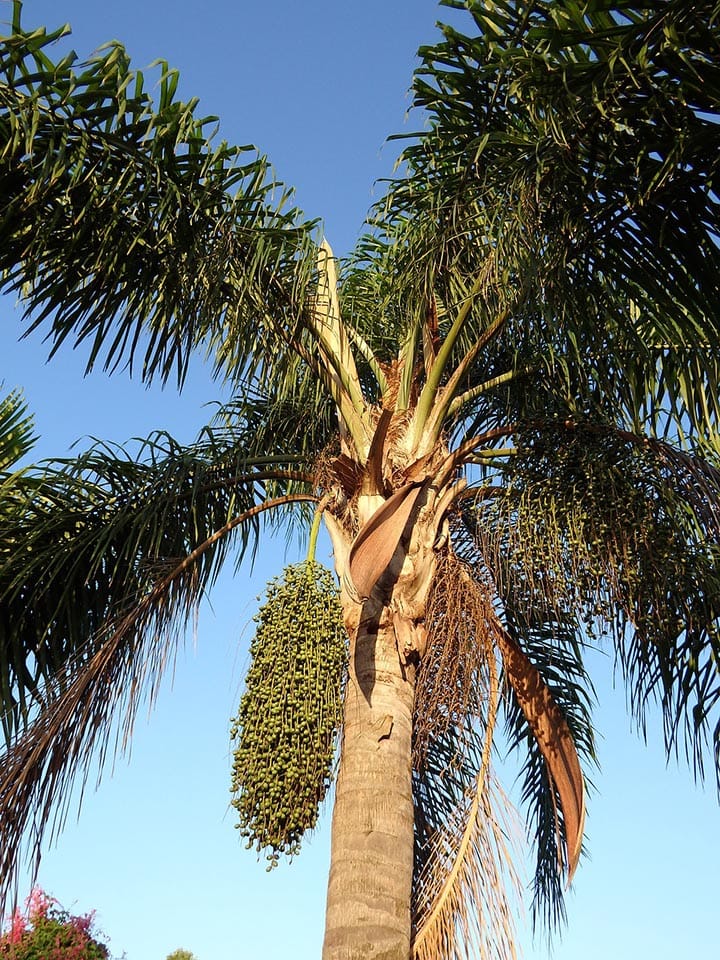
The foxtail palm is an attractive tree that’s self-cleaning and has multiple trunks with rounded fronds. It looks great in any landscape, as long as it’s not too close to the house because it can grow to about 30 feet.
3. Majesty Palm
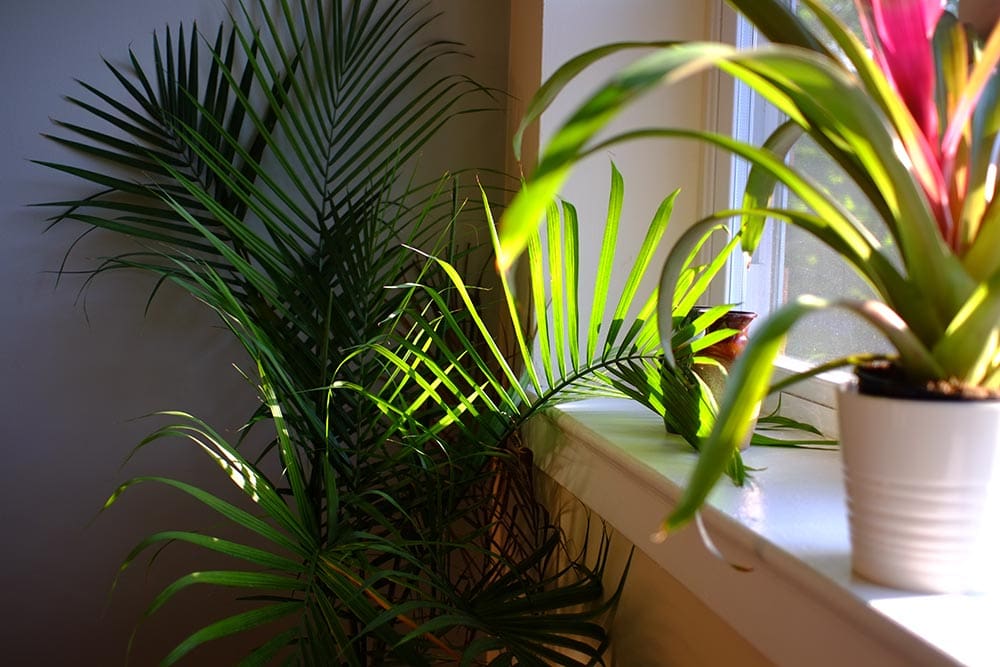
The majesty palm is another palm tree that has a wide trunk possibly for storing water. It first came to the United States in 1990, when Florida introduced it as a houseplant. It has attractive fronds that have varying shades of green.
4. Mexican Fan Palm
Mexican fan palms are tall trees that can grow to 100 feet or more. It gets its name from its dark green fan-shaped leaves that can be five feet wide. It has a reddish-brown trunk that’s thin and tapered.
5. Queen Palm
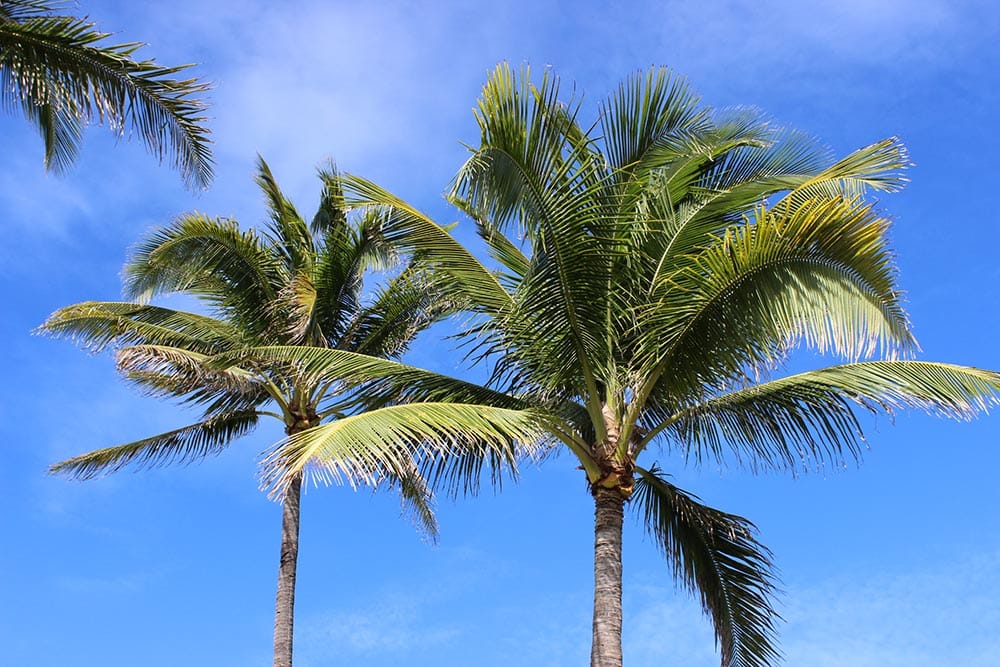
The Queen palm is a single trunk tree with glossy leaves. It can grow to 50 feet tall and produces bright orange dates that hang in ornamental clusters.
Fruit-Producing Palm Trees
6. Acai Palm
People usually grow the acai palm for the nutritious berries it produces that are rich in antioxidants and omega fatty acids. However, it also has attractive fan-shaped leaves.
7. Coconut Palm
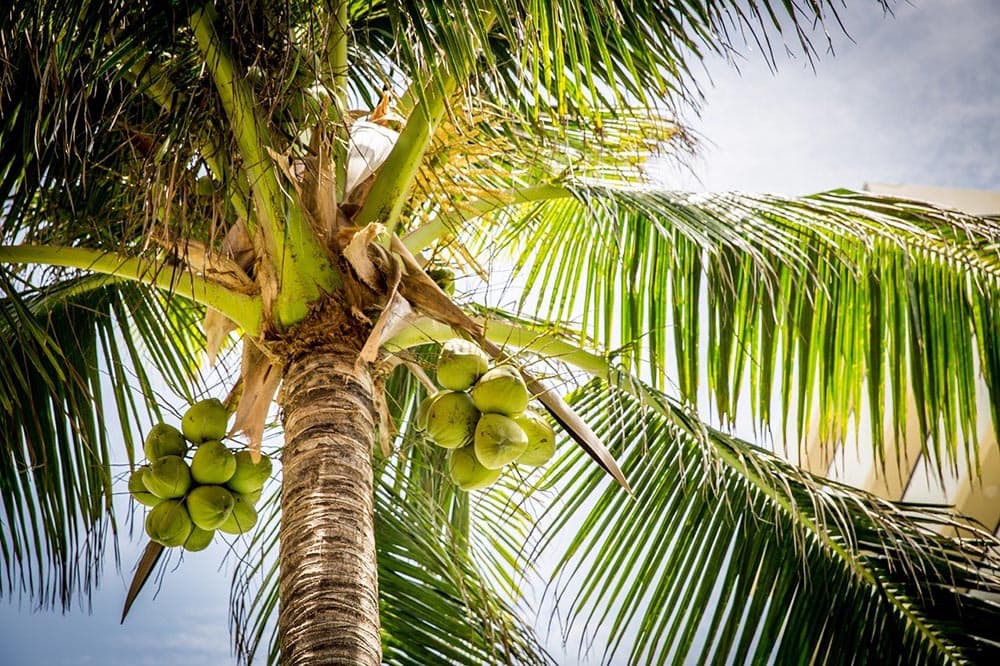
The coconut palm is one of the most popular varieties of palm trees globally—not only for the tasty fruit it produces, but also because it’s not picky about the soil it grows in. All this tree requires is plenty of sunshine and lots of water.
8. Date Palm
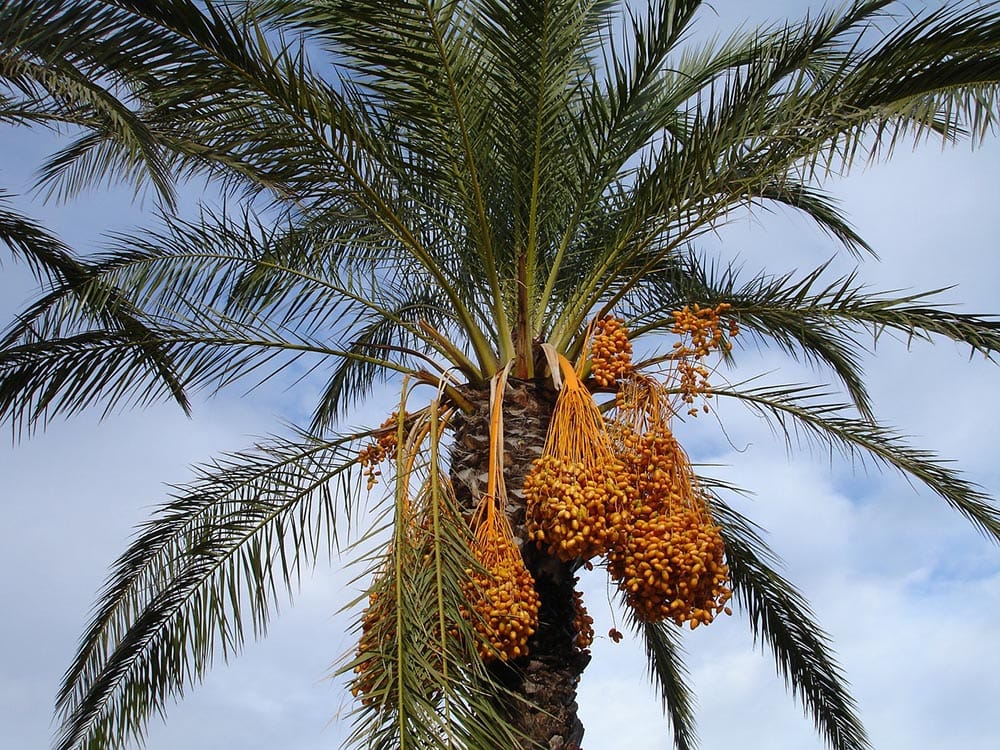
The date palm is a species of palm tree from Africa famous for its sweet edible dates. Some people believe this is one of the first plants cultivated as many as 5,000 years ago.
9. Jelly Palm
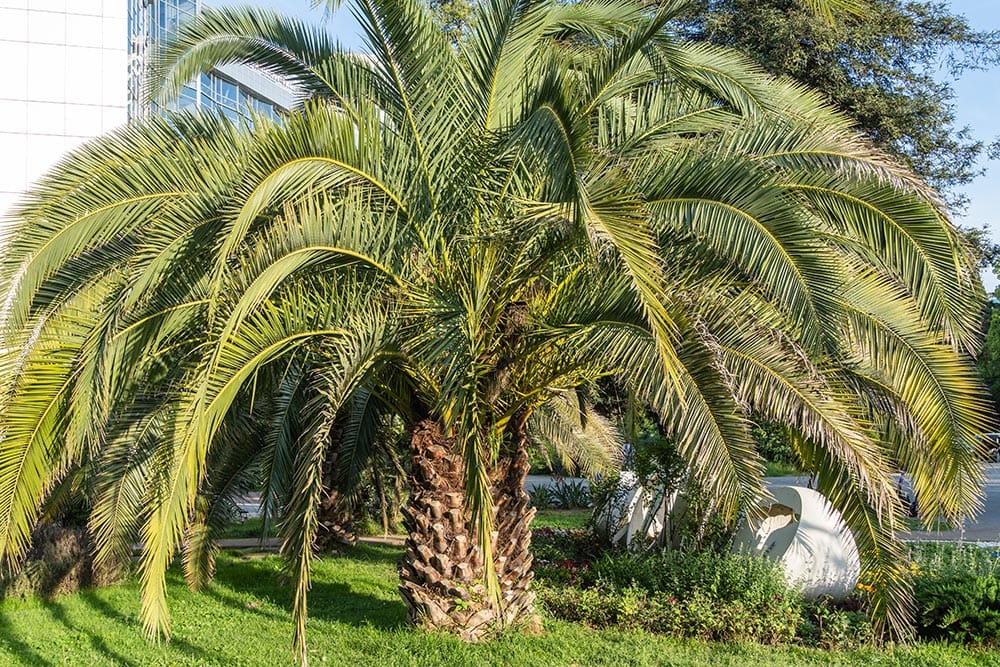
The jelly palm is a shorter palm tree that only grows to about 20 feet tall. It likes well-drained soil and gets its name from the tender fruit that it produces with a strong pineapple flavor.
10. Saw Palmetto Palm
The saw palmetto palm is used to produce a health food supplement. It may help relieve coughs due to various diseases and relieve chronic pelvic pain, migraines, hair loss, and more.
Cold-Tolerant Palm Trees
11. Bismark Palm

The Bismark palm has striking foliage color and texture. The thick trunk has a rounded head of stiff steel blue fan-shaped fronds that can be four feet wide or more.
12. California Fan Palm
The California fan palm is a flowering tree native to the southwestern United States. It can grow to 66 feet tall with a sturdy column and fan-shaped leaves.
- Related Read: 11 Types of Palm Trees in California
13. Chinese Fan Palm
The Chinese fan palm is a cold-resistant tree that can survive temperatures as low as 15º Fahrenheit. It’s a great apartment plant, but can we grow up to 40 feet outside.
14. Needle Palm
The needle palm is renowned because it is one of the hardest palm trees in the world. It’s a small, slow-growing tree with an attractive appearance and dark gray and shaped fronds.
15. Windmill Palm
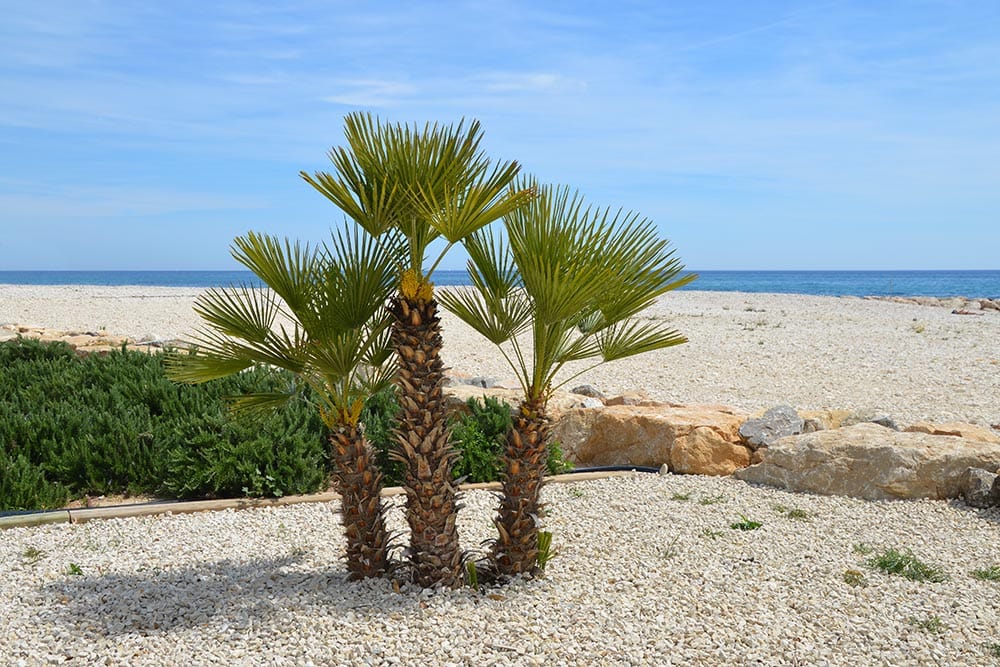
The windmill palm is an attractive tree with large round fan-shaped fronds that can grow to 75 inches long. This tree can grow to 40 feet tall but can take decades.
Drought-Tolerant Palm Trees
16. Blue Hesper Palm
The blue hesper palm is a single trunk variety of palm trees that can grow to about 40 feet tall. It has fan-shaped fawns with sharp spikes that are highly resistant to drought conditions.
17. Blue Latan Palm
The blue latan palm is an extremely tough tree that flourishes in extreme heat, sun, and dry conditions. However, this tree does not do well below 32º Fahrenheit, so it’s best to grow it in warmer regions.
18. Canary Island Date Palm
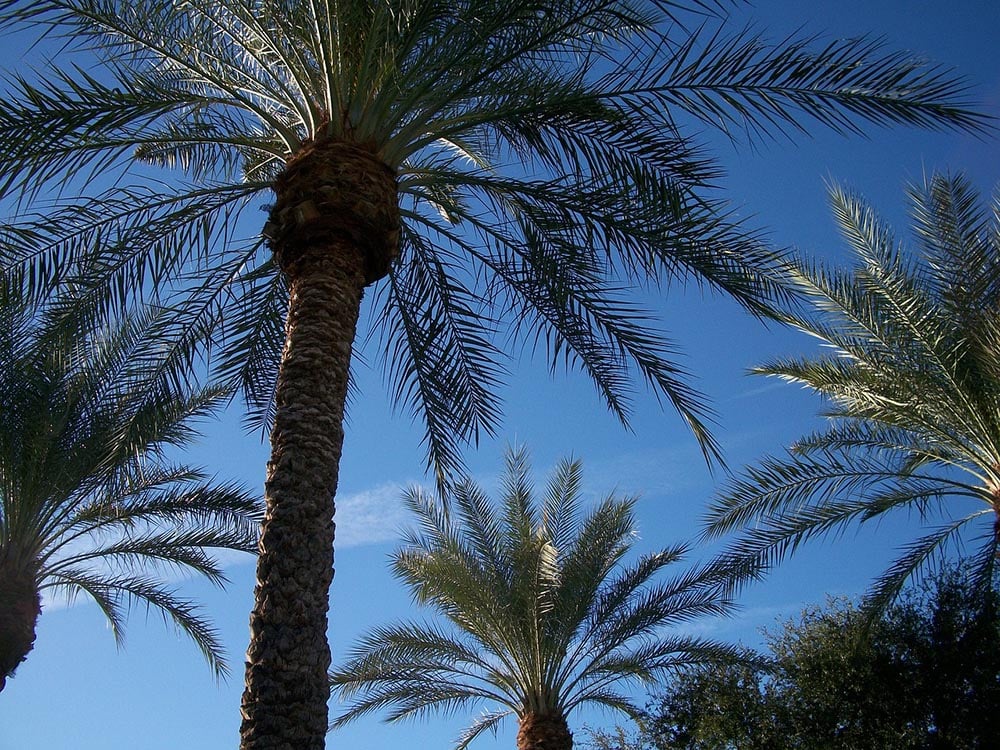
The Canary Island date palm is a popular ornamental tree because of the red fruit it produces. It usually grows to about 60 feet, but can take a long time to reach that height.
19. Sylvester Date Palm
The Sylvester date palm is one of the most attractive palm tree varieties. It quickly grows to its mature height of around 50 feet tall, and it can be as wide as 25 feet.
Salt-Tolerant Palms
20. Buccaneer Palm
The buccaneer palm tree is a hardy variety that can withstand drought salt and extreme temperature change. Each buccaneer palm has a unique appearance, with leaves ranging from green to bluish-green or even silver.
21. Cabbage Palm

The cabbage palm is another hardy tree that can grow to 65 feet tall. It has a rounded head but consists of wide fronds with numerous leaflets. It produces a fragrant flower that growers call cabbage palmetto.
22. Old Man Palm
Old man palms are a great choice for a small landscape. They also work well when planted in clumps, but they can get quite expensive. It gets its name from its unique trunk with a wool-like covering of fibers that hang down from the tree and resemble an older man’s beard.
23. Spindle Palm
The spindle palm has a single towering trunk that can reach more than 25 feet if it receives full sunlight. It has long fronds that can reach 10 feet long, creating an arching effect that looks pleasing when part of a larger landscape.
Small Palm Trees
24. European Fan Palm
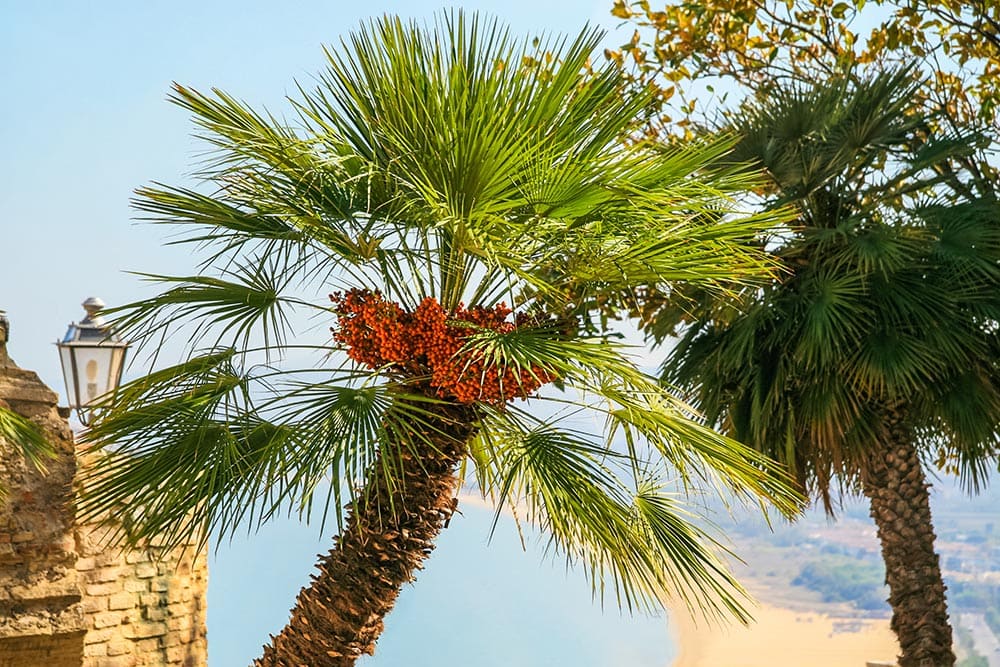
The European fan palm tree is the only palm native to Europe. It’s a slow-growing and clumping variety that grows to about eight to 15 feet tall, and spreads to 10 feet wide. This plant is on the Florida-friendly landscaping plant list, and its textured fronds make it stand out from other plants.
Related Read: 10 Best Stone & Gravel Types for Landscaping (Pros & Cons)
25. Bottle Palm
The bottle palm is a true palm with a swollen trunk. No one is sure why the trunk evolved, but many believe it might store water during a drought. It grows to about 10 feet tall with fronds that can grow to 12 feet.
26. Lipstick Palm
The lipstick palm is native to Thailand, Malaysia, Sumatra, and Borneo. Many people call it the red palm because of its coloring. It can grow to 52 feet tall, and its coloring puts it in high demand for landscaping projects.
27. Pindo Palm

The pindo palm is one of the more popular varieties of palm trees. It stands about 15 feet tall and has long feather-like leaves that range in color from green to bluish-gray. It produces yellow to orange flowers in late spring, turning into bright orange fruits we call pindo dates.
28. Pygmy Date Palm
The pygmy date palm is a slow-growing tropical plant that can reach several feet tall and is about four feet wide. While most palms have a plastic appearance, the pygmy date palm has soft leaves. It enjoys humid conditions and plenty of space.
Indoor Palms
29. Areca Palm
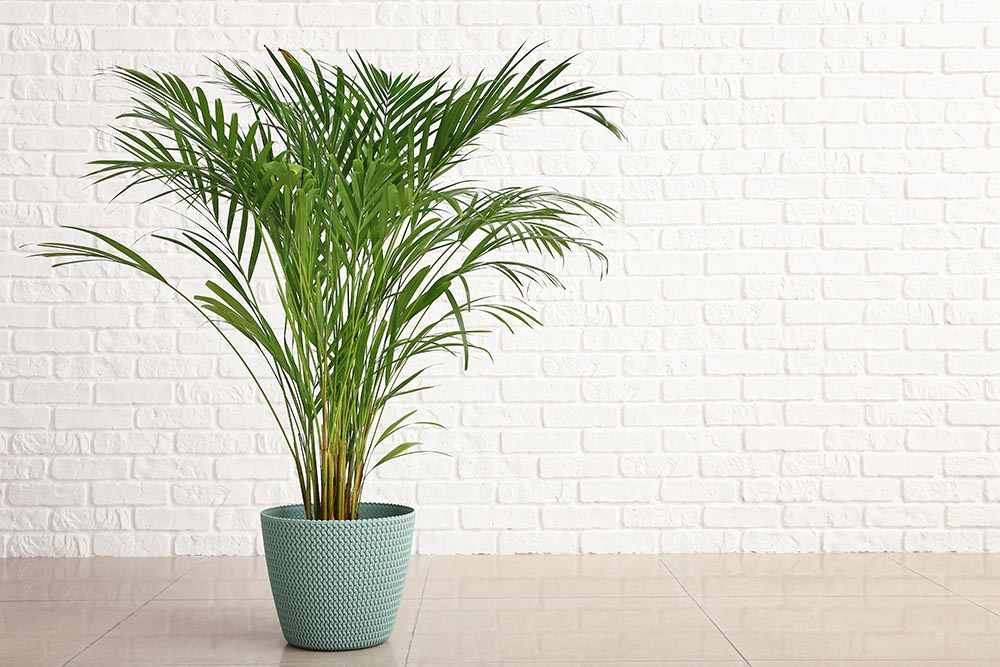
Areca palm is an ornamental tree with a bushy appearance. Some people call it a butterfly palm because of the way the leaves hang down, making it a popular indoor plant that you can find in many office buildings and doctor’s offices.
30. Bamboo Palm
The bamboo palm is a somewhat rare tree that thrives in low light conditions, making it an excellent office plant. It’s also hardy and tough enough to miss a few waterings.
Related Read: 16 Basement Office Ideas & Design Tips (with Pictures)
31. Kentia Palm
The Kentia palm tree is another office plant that grows better in indirect sunlight. This palm tree is not particular about its soil, but it likes well-hydrated ground with plenty of fertilizer.
32. Ponytail Palm
One look at the ponytail palm, and you’ll know exactly why it’s called that. It has a wide base with a thin top where the leaves extend. It needs very little care and only requires water every few weeks as long as you place it in sunlight.
Summary
As you can see, there is quite a large selection of palm trees available to you. If you live in the northern part of the United States, you’ll need to choose from the cold-tolerant palm trees. If you’re looking for palm trees to spruce up your outdoor landscape, we recommend small palm trees and fruit-producing palm trees. For in-home use, we recommend indoor palms for the best results.
You might also be interested in:
- Palm Tree vs Coconut Tree: What’s the Difference? (with Pictures)
- 18 Types of Coconuts: An Overview (With Pictures)
- How to Trim a Palm Tree: 4 Tips & Tricks
- How Deep Are Palm Tree Roots? The Surprising Answer!
Featured Image Credit: Pixabay
Contents
